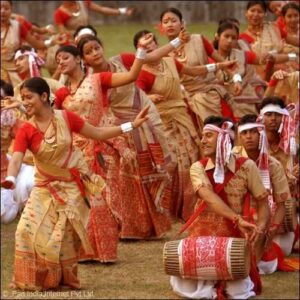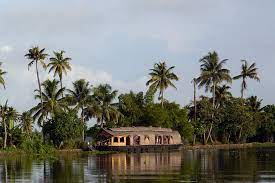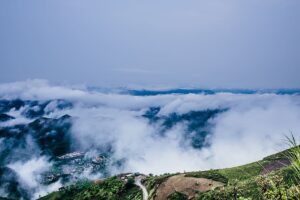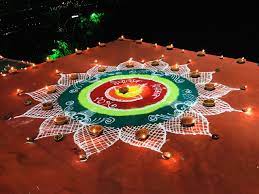Embarking on a journey to India? know the best time to travel India. Travelling to India is a captivating experience filled with cultural wonders, historical marvels, and natural beauty. However, choosing the right time to visit can greatly enhance your trip. In this blog post, we will guide you through the best seasons to travel to India, considering factors such as weather, festivals, and regional highlights. Whether you’re seeking vibrant celebrations, serene landscapes, or spiritual experiences, we’ll help you plan your itinerary for an unforgettable adventure.
Spring Delights: Embrace the Colors and Festivities
- Overview of the Spring season (February to March)
- Best time to travel India for cultural festivals like Holi, Baisakhi, Navaratri, and Easter
- Participating in the vibrant celebrations and unity of Holi


As the harsh winter gives way to the gentle warmth of spring, India comes alive with a vibrant burst of colors and festivities. From February to March, this season offers a delightful array of cultural celebrations that showcase the rich heritage and unity of the country. Let’s dive into the world of spring delights and explore the joyous festivals that mark this season.
The Spring season in India is a time of renewal and rejuvenation. The weather becomes pleasantly mild, with blooming flowers and lush greenery adorning the landscapes. It is a time when people bid farewell to the winter blues and embrace the vibrant spirit of spring.
One of the most iconic festivals of the Spring season is Holi, also known as the Festival of Colors. Holi is celebrated with great enthusiasm across the country, bringing people of all ages and backgrounds together in a joyous celebration. The festival commemorates the victory of good over evil and the arrival of spring. Participants gather in open spaces, smearing each other with vibrant colored powders and spraying water, creating a kaleidoscope of hues. The atmosphere is filled with laughter, music, and dance, as people immerse themselves in the festive spirit. Holi is a time of unity, where social barriers are broken, and people come together to celebrate the joy of life.
Another significant festival of the Spring season is Baisakhi, celebrated predominantly in the state of Punjab. Baisakhi marks the harvest season and holds great cultural and religious importance. It is a time when farmers express gratitude for the bountiful harvest and seek blessings for the upcoming agricultural cycle. The festival is characterized by vibrant processions, traditional dances like Bhangra and Giddha, and the melodious sound of folk music. Baisakhi is a celebration of community, where people come together to share in the joy of abundance and express their cultural heritage.
Navaratri, meaning “nine nights,” is another prominent festival celebrated during the Spring season. This festival is dedicated to the worship of the divine feminine energy, represented by various forms of the goddess Durga. Navaratri is marked by elaborate dance performances, known as Garba and Dandiya Raas, where participants dress in colorful traditional attire and dance to rhythmic beats. The festival is a celebration of music, dance, and devotion, creating a vibrant and energetic atmosphere.
Spring also brings the celebration of Easter, which holds religious significance for the Christian community. Easter commemorates the resurrection of Jesus Christ and is observed with solemn religious services and joyful festivities. People attend church services, exchange greetings, and participate in Easter egg hunts, symbolizing new life and the arrival of spring. It is a time of spiritual reflection and celebration of faith.
Participating in the vibrant celebrations and unity of Holi, Baisakhi, Navaratri, and Easter is an enriching experience that allows you to immerse yourself in the cultural tapestry of India. The joyous festivities, the splendor of colors, and the sense of togetherness create a memorable and heartwarming atmosphere. It is a time when people set aside their differences and come together to celebrate the beauty of life and the arrival of a new season.
So, embrace the colors and festivities of the Spring season in India, and allow yourself to be captivated by the energy and spirit of these cultural celebrations. Experience the joy of Holi, the abundance of Baisakhi, the devotion of Navaratri, and the faith of Easter. Let the vibrant essence of spring fill your heart and create lasting memories of unity, celebration, and cultural diversity. Spring is best time to travel India.
Summer Retreats: Seek Serenity in the Hills and Backwaters
- Exploring the cooler hill stations in the Himalayas during summer (April to June)
- Best time to travel India for the popular hill station destinations like Shimla, Manali, Shillong, Leh and Mussoorie
- Adventure activities, relaxation, and tranquility in the serene backwaters of Kerala


When the scorching heat of summer arrives, it’s the perfect time to escape to the cool and serene hill stations of the Himalayas or indulge in the tranquility of the backwaters in Kerala. From April to June, these destinations offer a blissful retreat where you can find respite from the sweltering temperatures and immerse yourself in nature’s embrace.
The hill stations of the Himalayas, such as Shimla, Manali, and Mussoorie, beckon travelers with their refreshing climate and breathtaking landscapes. Shimla, the capital of Himachal Pradesh, is a popular destination known for its colonial charm and stunning vistas. Stroll along the Mall Road, visit the Viceregal Lodge, and take a ride on the toy train to experience the nostalgic allure of this hill station. The pleasant weather and panoramic views of the surrounding mountains make it an ideal summer retreat.
Manali, nestled amidst snow-capped peaks and lush valleys, is another Himalayan gem. It offers a perfect blend of adventure and relaxation. Engage in thrilling activities like paragliding, river rafting, and trekking to experience an adrenaline rush. Visit the Hadimba Devi Temple, explore the Solang Valley, or simply unwind amidst the serene beauty of nature. The cool temperatures and the scenic landscapes make Manali a sought-after destination for summer travelers.
Mussoorie, also known as the “Queen of Hills,” is a picturesque hill station in Uttarakhand. The refreshing climate, scenic viewpoints, and cascading waterfalls make it a popular summer retreat. Take a cable car ride to Gun Hill, explore the Mall Road, and visit the serene Kempty Falls. Mussoorie offers a tranquil escape from the summer heat, allowing you to rejuvenate your senses in the lap of nature.
If you seek serenity and tranquility, the backwaters of Kerala are an ideal destination. Kerala is renowned for its interconnected network of canals, rivers, and lakes that form the mesmerizing backwaters. The soothing houseboat cruises allow you to glide through the serene waters, surrounded by lush greenery and traditional villages. Embrace the slow pace of life, savor traditional Kerala cuisine, and witness the simple yet beautiful everyday moments of the locals. Alleppey and Kumarakom are popular backwater destinations that offer a blissful retreat and a chance to unwind amidst nature’s beauty.
While in Kerala, don’t miss the opportunity to explore the hill station of Munnar. Nestled in the Western Ghats, Munnar boasts sprawling tea gardens, mist-covered hills, and cascading waterfalls. Take leisurely walks through the tea estates, visit the Eravikulam National Park to spot rare wildlife, and indulge in the refreshing aroma of freshly brewed tea. Munnar’s pleasant climate and scenic beauty make it an excellent choice for a summer getaway.
Whether you choose the cool hills of the Himalayas or the serene backwaters of Kerala, summer retreats in India offer a respite from the heat and a chance to reconnect with nature. Engage in adventure activities, relax amidst scenic landscapes, and immerse yourself in the tranquility of these idyllic destinations. So, pack your bags, embrace the summer, and embark on a journey that promises serenity, rejuvenation, and unforgettable memories.
Monsoon Magic: Embrace the Beauty of Nature
- Experiencing the monsoon season (July to September)
- Best time to travel India for the lush green forests and rolling hills of the Western Ghats and the rains in Meghalaya.
- Destinations like Munnar, Coorg, and Udaipur with cascading waterfalls and mist-covered mountains


Monsoon season in India, which spans from July to September, is a time of enchantment and natural beauty. While some may consider it an off-peak travel period due to the occasional rainfall, it is a season that unveils the true magic of India’s landscapes and offers a unique and captivating experience.
One of the regions that truly comes alive during the monsoons is the Western Ghats, a mountain range that stretches along the western coast of India. The lush green forests, rolling hills, and mist-covered mountains create a picturesque backdrop that is straight out of a fairytale. This region is home to several captivating destinations that showcase the monsoon magic.
Munnar, nestled in the heart of the Western Ghats in the state of Kerala, is a paradise for nature lovers. The tea gardens of Munnar transform into a carpet of vibrant green during the monsoons. The rainfall rejuvenates the tea plantations, and the mist that envelopes the hills adds an ethereal charm to the scenery. Trekking through the tea gardens, visiting waterfalls like Attukad and Lakkam, and exploring the Eravikulam National Park are some of the experiences that await you in Munnar.
Coorg, also known as the “Scotland of India,” is another destination that flourishes during the monsoon season. This hill station in Karnataka is renowned for its coffee plantations, spice gardens, and scenic landscapes. The monsoons breathe life into Coorg, as the waterfalls cascade down the hills in full force and the rivers flow with vigor. Abbey Falls, Irupu Falls, and the mesmerizing views from Raja’s Seat are some of the attractions that showcase the beauty of Coorg during this season.
Udaipur, located in the state of Rajasthan, may not be traditionally associated with monsoon magic, but it holds its own allure during this time. Known as the “City of Lakes,” Udaipur boasts several picturesque lakes that become even more enchanting during the monsoons. The raindrops gently touch the serene waters, creating ripples that reflect the surrounding palaces and temples. Lake Pichola and Fateh Sagar Lake are particularly captivating during this season. Exploring the City Palace, strolling through the narrow streets of the old city, and experiencing the monsoon cuisine of Rajasthan are some of the delights that await visitors to Udaipur.
Embracing the monsoon season in India allows travelers to witness the true beauty of nature. The vibrant shades of green, the rhythmic sound of raindrops, and the cool breeze create a sense of tranquility and harmony. While it is important to be prepared for occasional showers, the monsoon season offers a quieter and more introspective travel experience, away from the crowds and hustle-bustle of peak tourist periods.
It’s advisable to pack rain gear, such as waterproof jackets and umbrellas, to make the most of your monsoon journey. Additionally, exploring local cuisine and savoring hot tea or coffee amidst the rains can be a delightful experience.
Whether it’s the mist-covered hills of Munnar, the cascading waterfalls of Coorg, or the serene lakes of Udaipur, embracing the monsoon season in India allows you to witness nature in all its glory. It’s a time to appreciate the beauty of rain-kissed landscapes, indulge in soul-stirring experiences, and create memories that will stay with you forever. So, don’t let the rain deter you; instead, let it be the source of inspiration for a truly magical monsoon adventure.
Autumn Splendors: Revel in Festivals and Historical Marvels
- Highlights of the autumn season (October to November)
- Best Time to Travel India for the festivals of
- Celebrating Diwali, the festival of lights, across the country
- Spiritual fervor in Varanasi and exploring magnificent monuments in North India


Autumn in India is a time of celebration and cultural splendor. Best time to travel India, From October to November, the country comes alive with festivities and offers a unique opportunity to witness the grandeur of Diwali, the festival of lights. This is a highly anticipated and widely celebrated festival that illuminates the entire nation.
Diwali holds great significance in Indian culture, best time to travel India and is a time when people come together to celebrate the victory of light over darkness and good over evil. The festival is marked by the lighting of diyas (earthen lamps) and decorative lights, creating a mesmerizing spectacle of vibrant colors. The streets, homes, and temples are adorned with intricate decorations, and the air is filled with the aroma of traditional sweets and delicacies.
One of the most enchanting places to experience Diwali is Varanasi, a city known for its spiritual fervor. Located on the banks of the sacred Ganges River, Varanasi holds deep religious significance for Hindus. During Diwali, the city takes on a magical ambiance as thousands of diyas are lit along the river ghats, creating a stunning reflection in the water. The atmosphere is filled with chants, prayers, and the melodic sounds of devotional music. Witnessing the Ganga Aarti, a spiritual ceremony performed by priests, is a truly mesmerizing experience.
Autumn is also an ideal time to explore the historical marvels of North India. The region is home to magnificent monuments that showcase India’s rich architectural heritage. The iconic Taj Mahal in Agra is a must-visit during this season. As the weather becomes more pleasant, you can admire the stunning marble structure in all its glory. The intricate carvings and symmetrical design of the Taj Mahal are even more captivating when seen under the soft autumn sunlight.
Jaipur, the capital city of Rajasthan, is another destination to explore during autumn. Known as the “Pink City,” Jaipur boasts numerous palaces, forts, and vibrant bazaars. The majestic Amber Fort, the grand City Palace, and the splendid Hawa Mahal (Palace of Winds) are just a few of the architectural wonders that await you. The city comes alive during Diwali, with markets adorned with traditional decorations and a festive atmosphere that is hard to resist.
In addition to Diwali, autumn offers a range of other festivals and cultural events. Navaratri, a nine-night festival dedicated to the worship of the divine feminine, is celebrated with great enthusiasm in many parts of India. The festival showcases colorful dance performances, music, and the iconic Garba and Dandiya Raas dances in Gujarat and other regions.
Autumn in India is a time of joy, best time to travel India, it is also best time to travel india for celebration, and exploration. It presents an opportunity to immerse yourself in the cultural richness, witness the grandeur of historical monuments, and experience the spiritual fervor that permeates the air. From the dazzling lights of Diwali to the vibrant festivities of Navaratri, autumn in India is a season of splendor and an ideal time to embark on a remarkable journey of discovery.
Choosing the best time to travel to India is key to a remarkable journey. Consider the seasons, festivals, and regional highlights to make the most of your visit. Whether you’re captivated by vibrant celebrations, tranquil landscapes, or spiritual experiences, India awaits you with open arms. Start planning your enchanting journey and create memories that will last a lifetime.
FAQs (Frequently Asked Questions) about the Best Time to Travel India:
Q1: What is the best time to visit India?
A1: The best time to visit India depends on various factors such as weather, festivals, and regional attractions. Spring (February to March) and autumn (October to November) are generally considered ideal, but it ultimately depends on your preferences and the specific experiences you seek.
Q2: Is it advisable to travel during the monsoon season?
A2: Traveling during the monsoon season (July to September) can have its own charm, especially if you wish to experience India’s lush landscapes and enjoy off-season rates. However, keep in mind that heavy rainfall can affect transportation and outdoor activities in certain regions. It’s recommended to check weather forecasts and plan accordingly.
Q3: Are there any specific festivals to experience in India?
A3: India is known for its diverse and vibrant festivals. Some of the popular festivals to experience include Holi (March), Diwali (October/November), Navaratri/Durga Puja (October), and Eid (varies based on the lunar calendar). These festivals offer a unique glimpse into India’s rich cultural traditions and celebrations.
Q4: What should I pack for my trip to India?
A4: Depending on the time of year and regions you plan to visit, pack a combination of lightweight and breathable clothing for the summers, layered clothing for the winters, and rain gear for the monsoon season. Additionally, it’s advisable to carry comfortable footwear, sunscreen, insect repellent, and any necessary medications.
Q5: Are there any precautions I should take while traveling in India?
A5: Like any travel destination, it’s important to take certain precautions while traveling in India. Ensure you have travel insurance, follow local customs and traditions, stay hydrated, and maintain personal safety measures such as keeping your belongings secure and being cautious of your surroundings.
Q6: Can I travel to India on a budget?
A6: Yes, it is possible to travel to India on a budget. The country offers a wide range of accommodation options, local street food, and affordable transportation choices. Research budget-friendly destinations, use public transportation when available, and explore local markets for affordable shopping experiences.
Q7: Are there any specific health considerations for traveling in India?
A7: It’s advisable to consult your healthcare provider or a travel health specialist before visiting India. They can provide guidance on necessary vaccinations, medications, and precautions to take based on your specific health needs and the regions you plan to visit.
Q8: Is it safe for solo travelers to visit India?
A8: India can be a safe destination for solo travelers, but it’s important to exercise caution and use common sense. Research your destinations, stay in reputable accommodations, avoid isolated areas at night, and stay connected with family or friends. It’s also helpful to seek local advice and recommendations.
Q9: How can I experience the local culture while traveling in India?
A9: To experience the local culture, interact with locals, try regional cuisine, visit local markets, participate in festivals and religious ceremonies, and explore off-the-beaten-path destinations. Engaging with locals and being respectful of their traditions will provide a deeper cultural immersion.
Q10: Should I hire a local guide for my trip to India?
A10: Hiring a local guide can greatly enhance your experience in India. They can provide valuable insights, navigate language barriers, and help you discover hidden gems. Look for licensed and experienced guides who have good reviews or seek recommendations from trusted sources.
Please note that the answers provided here are for informational purposes only and it’s always recommended to conduct further research and consult with relevant authorities before making any travel decisions.
For comparing flight fare you may use Google Flights
For more travel related blogs visit Travel Resource


78 thoughts on “Best Time to Travel India: Unveiling the 4 Seasons for an Enchanting Journey”